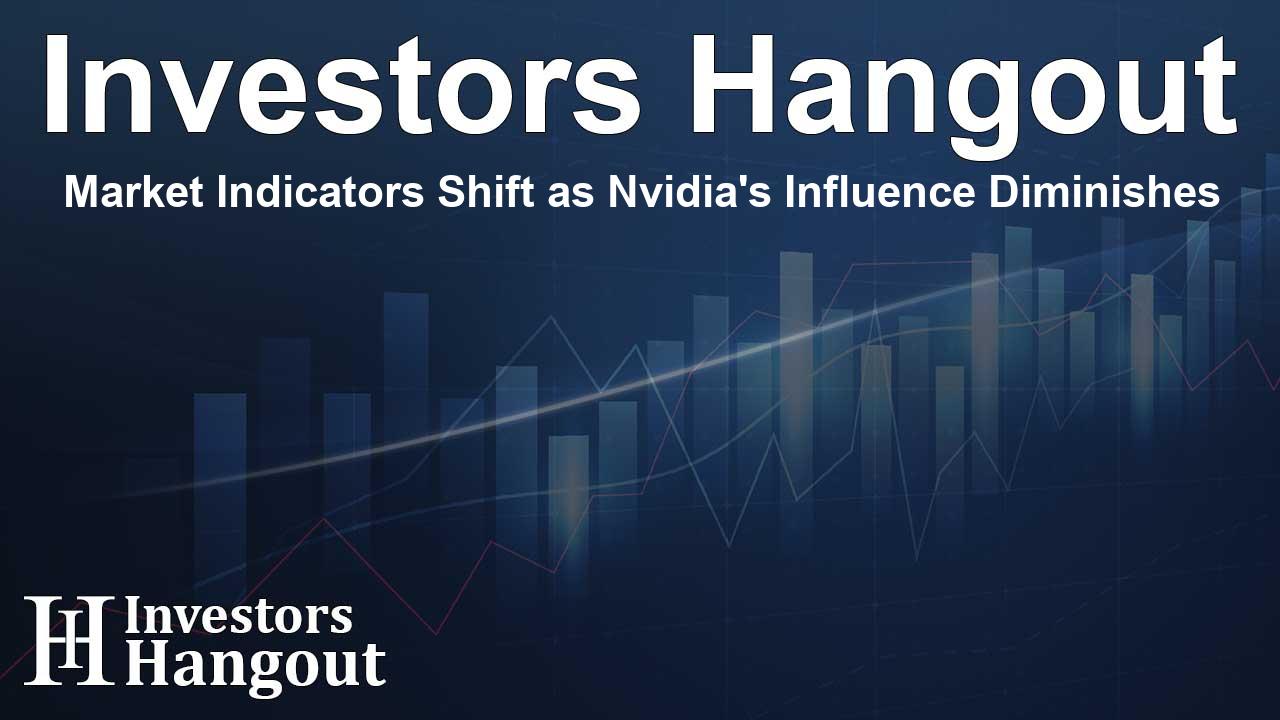Market Indicators Shift as Nvidia's Influence Diminishes

Market Signals and Stock Performance
In recent times, Nvidia (NASDAQ: NVDA) has stepped back and isn't the sole driver of market movements. The broader market showed a robust performance, with a notable upsurge of 377 stocks in the S&P 500, while only 124 faced declines. Even the S&P 500 Equal Weight ETF (NYSE: RSP) demonstrated strong gains, indicating a healthy market breadth.
This scenario leads to intriguing discussions regarding the stability of market signals. Although typical indicators can often suggest certain market trends, there are occurrences where these signals do not lead to anticipated outcomes. We're now experiencing a second period since mid-September where expected patterns have not translated into action within the equity market, leaving many investors seeking explanation.
Understanding Momentum and Volatility
Part of the ongoing analysis includes observing the dynamics surrounding volatility. With the consensus on call walls trending around the 5,800 mark, this is particularly significant as we transition towards earnings reports. The starting bell for earnings season rings with JPMorgan's announcement, adding layers of complexity to our expectations.
The market's typical responses, particularly in connection with reserve balances, have shifted. Our Community has continually discussed the implications of these balances, especially as they have not reverted to previous levels. The current landscape suggests they may remain subdued longer than anticipated, particularly with the BTFP heading towards a draining phase.
Currency Indicators and Their Impact
Further complicating the picture is the performance of the USD/CAD, a currency pair that has historically indicated shifts in market dynamics. Expectations were that it would trend upward, and it has begun to do so, though overall market reactions have yet to reflect this adequately.
Alongside this, the USD/CHF currency pair remains a reliable metric for gauging movements related to technology stocks, often pairing well with companies like Apple (NASDAQ: AAPL). However, recent behaviors indicate a discrepancy, wherein expected correlations aren't aligning, raising questions on market reliability.
Market Behavior and Participation
The market currently feels somewhat eerie, characterized by low participation levels that have led to a quieter trading environment. Observations around the VVIX, which tracks the volatility of the VIX itself, reveal a state of elevated levels around 120, signaling that volatility sentiment is alive, though not manifesting abundantly in trades.
The 180-week cycle is a pivotal concept among cycle analysts, highlighting major shifts occurring within the market. This cycle is on the verge of its expected peak, making it crucial for traders to stay alert, as historical trends show these cycles rarely follow a routine path.
A Shift in Strategies
With market behaviors now demanding new strategies, a shift in focus has surfaced—a pivot towards understanding market mechanisms over traditional factors like fundamentals or technical analysis. This evolution pushes traders towards re-examining tools that seem to falter in traditional contexts.
Many speculate that recent silence may stem from a growing proportion of 0DTE (zero days to expiration) day traders focusing primarily on short-term market fluctuations—investors are attempting to navigate unprecedented paths through oftentimes ambiguous signals.
Frequently Asked Questions
What are the key signals indicating market strength?
Key signals include broad stock performance in the S&P 500, with many stocks rising while few decline. This suggests overall health in market breadth.
How does Nvidia's current performance affect the market?
Nvidia's influence has lessened recently, indicating broader market movements that aren't solely reliant on its performance.
What role do currency pairs like USD/CAD and USD/CHF play?
These currency pairs often dictate shifts in market dynamics and provide insight, especially relating to technology stocks, although recent trends have shown discrepancies.
What should investors focus on now?
Investors may benefit from understanding market mechanisms rather than solely relying on traditional analyses, due to the evolving nature of market behaviors.
How do volatility measures reflect current market sentiment?
Current volatility measures like VVIX reveal heightened levels, indicating that while sentiment towards volatility is high, actual market action may remain subdued.
About Investors Hangout
Investors Hangout is a leading online stock forum for financial discussion and learning, offering a wide range of free tools and resources. It draws in traders of all levels, who exchange market knowledge, investigate trading tactics, and keep an eye on industry developments in real time. Featuring financial articles, stock message boards, quotes, charts, company profiles, and live news updates. Through cooperative learning and a wealth of informational resources, it helps users from novices creating their first portfolios to experts honing their techniques. Join Investors Hangout today: https://investorshangout.com/
Disclaimer: The content of this article is solely for general informational purposes only; it does not represent legal, financial, or investment advice. Investors Hangout does not offer financial advice; the author is not a licensed financial advisor. Consult a qualified advisor before making any financial or investment decisions based on this article. The author's interpretation of publicly available data shapes the opinions presented here; as a result, they should not be taken as advice to purchase, sell, or hold any securities mentioned or any other investments. The author does not guarantee the accuracy, completeness, or timeliness of any material, providing it "as is." Information and market conditions may change; past performance is not indicative of future outcomes. If any of the material offered here is inaccurate, please contact us for corrections.